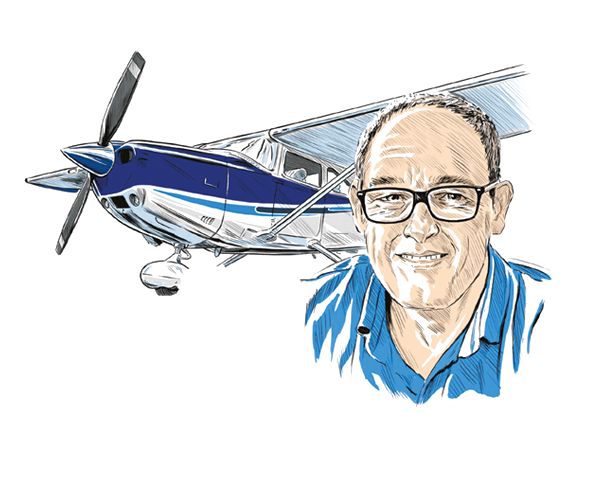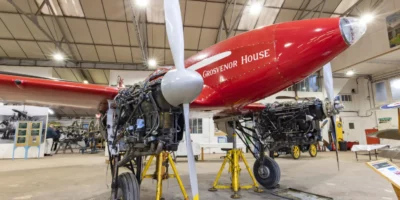Pilots all do a thing. Some of us do it very privately, some of us do it loudly, and some even do it on YouTube, but we all do it. We all spend time speculating about the cause of an accident, often a long time before we have all, or perhaps even any of the facts.
Speculating, or running through some likely scenarios helps us reflect on our own decision making, our own skill sets, our own mitigations. Rather than the hypocritical tutting we often hear, I generally think it’s a good thing. There’s also a trap, and it’s one that we have all fallen into once or twice.
That trap is allowing the ‘well that would never happen to me’ line run through your mind without ruthlessly chasing it out, giving yourself a good talking to, and re-establishing the indisputable fact that every single one of us is capable of making the most basic of mistakes if circumstances conspire against us.
I recently gave myself an unintentional practical lesson in this very subject. I’d been having some electrical problems with the C182, which manifested themselves with a low voltage warning. While the electrical system was putting out some amps, it wasn’t producing enough of them to run everything without discharging the battery.
The flight time between base and maintenance is about 15 minutes, so after having diagnosed the likely culprit as being a duff alternator, I planned to fly back to base (using a jump start if necessary) where I’d recharge the battery and return to maintenance once a new (outrageously expensive) alternator had been delivered.
As luck would have it, the weather for the flight back was largely clear, there were some isolated heavy showers about, as well as a strong gusting wind that was, of course, across the runway but nothing too difficult.
Before departing I made sure that all of the unnecessary electronics were off, leaving myself with the GTN750 (comm 1), the two G5s (which both have a four-hour battery) and the transponder. I pulled the CB for the autopilot to disable Garmin’s ESP… and took off.
The flight itself was a bit of a physical workout but 10 minutes after taking off my GTN750 started behaving as if it were my grandparent’s old TV, so I turned it off and turned on the other radio (which given the audio panel is basically software controlled via the GTN now became comm 1).
Then the G5 started flashing warnings about the ARINC429 power supply failing. Oh well, although a shower had gone through recently, the way back to base was clear and it was now in sight.
The gusty wind favoured Runway 10, which as luck would have it, has a little bit of a (possibly now wet) grass downslope. It also has a road and fence just before the threshold along with an understandable request not to fly a too low, too shallow approach.
“The flight was a bit of a physical workout, but 10 minutes after taking off my GTN750 started behaving like grandparent’s old TV”
And so to the next decision. With a backdrop of failing instruments, gusty turbulent conditions and a possibly wet and slightly downhill runway, what was I going to do about flaps? Did I have enough power left to run them, and would I have enough power to raise them again should I need to go-around?
Leaving them up would mean a faster, shallower approach – and there’d be an extra few knots, thanks to adding half the gust factor too. Using flaps would likely use much of my battery’s remaining power with no way of knowing if there would be enough left to bring the flaps back up, or if I’d be stuck with maybe full flap for another circuit or diversion.
In the end I split the difference, used 20° of flap, made an approach that wasn’t too fast or too shallow, and had just enough electrical power remaining to bring the flaps up after landing.
Shutting down outside the hangar I took a few minutes to think about what was effectively just a short local flight. None of the elements were super challenging, but all of them needed thinking about, and all of them took a little bit of capacity.
It was not difficult to imagine how interesting things could become with a couple of additional problems or distractions.
Accidents are rarely caused by single isolated events, and while I’m sure none of us would ever make a silly mistake in isolation (or from the comfort of our keyboards), we’re perhaps all safer once we accept that there’s no place for the ‘well that would never happen to me’ school of thought.








2 comments
Interesting post Ian. Lots of stuff happening putting extra load on the brain and when it’s a lumpy day you have to concentrate a bit on the actual flying too. If, say, you’d also perhaps have to explain to a pax what was going on, or handle some complex airspace, that could have made it that much harder. Anyway, food for thought!
How did you turn off your GTN750? Ours doesn’t have an off switch!